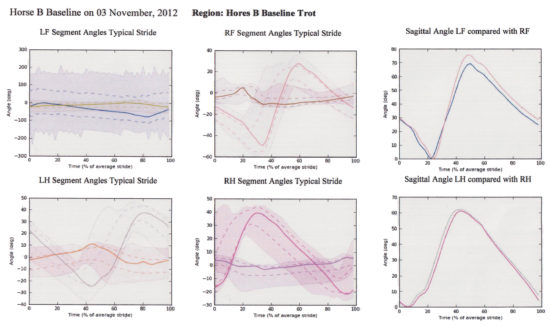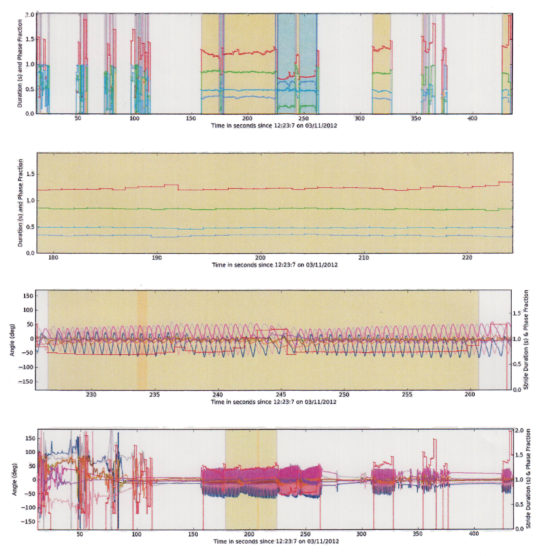The Ongoing Controversy – Treed vs. Treeless Saddles – Part III
Not many people today have the luxury of time to learn to ride as well as the native Americans did – with or without saddles. Many people still need to use a saddle to even stay on a horse so you can’t really compare the two. Nothing would make us happier as saddle makers and saddle fitters than having bareback pads/treeless saddles universally accepted – they’re much faster and much cheaper to make, and little skill is required to sew what is essentially a leather pad. If this is truly the best thing for the horse, why have many of the long-established traditional saddle makers not jumped on the bandwagon?
Think of this other analogy. Why do you not find high level human athletes pursuing their sports barefoot? For three reasons – support, comfort, and protection that a shoe can give. There are only a handful of riders (from all over the world) at higher levels riding a bareback pad/treeless saddle. Elite (equine) athletes require support, comfort and protection to perform optimally. Without a tree, a bareback pad/treeless saddle cannot protect the horse’s spine, support the curvature of the rider’s spine, and be comfortable for both horse and rider. The rider needs to sit softly (only achievable with correct posture and support of the four curvatures of the human spine) and the horse needs to keep the longissimus dorsi loose, so the back can rise, the hindquarters can come underneath, and the weight comes off the forehand.

Much has been written about how wonderfully the horse moves in the shoulder with a bareback pad/treeless saddle, yet this ‘freedom of movement’ in the shoulder is ineffective and long-term damaging if the back is hollow because the back muscle tightens due to the sharp seat bones of the rider. There is no support to the rider’s spine and no protection to the horse’s spine. The result is that all the weight is on the forehand, which is an undesirable consequence.
The majority of people riding have horses larger than the Indian pony (which was of course, traditionally ridden bareback), and common knowledge states that the bone density usually only optimally supports an 800 lb. horse. (Most horses weigh much more than this). If the horse is not ridden off the forehand, damage will result to the ligaments, joints, tendons, and musculature.
In the past at international championships you likely will not see a bareback pad/treeless saddle – even race saddles, although tiny, do contain 1/2 trees to protect the spine. Of course, a saddle fitter will always state his/her opinion, such as the owner of the bareback pad/treeless saddle also has his/her opinion – we live in a free society where everyone is allowed to state his/her opinion – however, for further input to form an educated opinion, please refer to the book “The Horse’s Pain Free Back and Saddle Fit” by Dr. Joyce Harmann, DVM. She has made saddlefitting her focus – especially the chapter on Saddle Construction, p. 37 – Treeless saddles. She mentions how important it is to keep the weight off the horse’s spine. Dr. Hilary Clayton has also substantiated this in an article appearing in Equus Magazine, which I will share with you next week to close this topic off.
More and more veterinarians concur and investigate saddle fit, with research and evidence collected with MRI’s, fibreoptic or thermographic cameras, and computerized saddle pads.
Although some of the bareback pads/ treeless saddles have incorporated a gullet into their design, without the tree you cannot bridge the spinal processes nor the spinal ligament system properly, and therefore end up not providing the protection a properly fitted treed saddle will provide. Flexible, adjustable trees are an alternate choice to traditional wooden spring trees to provide horse and rider with what they need to prevent long-term damage.
There is nothing wrong with going barefoot, (or ‘bareback’) but to ensure the health of athletes (human or equine) the educated consumer will choose the product which provides the best support, comfort and protection. Obviously no one is going to convince anyone of anything they don’t want to believe in – bottom line is you should ride in whatever you are comfortable in, because no matter how well your saddle fits your horse (bareback pad/treeless saddle or treed saddle), your horse will never move optimally if you as the rider are not comfortable as well, because your discomfort will translate down. I don’t think anyone would argue that point, but the point is, please consider that the reason treed saddles have been around for so long is because they serve a distinct purpose – to protect, support, and provide comfort to both horse and rider. But use whatever works for you – just be aware that sometimes products appear on the market that seem to be a lot better than they really are, given the logic behind the manufacturing.
Nonetheless, a properly fitted treed saddle is superior to a treeless saddle when it comes to protecting both horse and rider from long-term back damage and pain. Sometimes things that appear to be perfect solutions in the short-term will prove to have less than satisfactory outcomes in the long-term. If you tap the top of your hand, it doesn’t hurt much the first couple of minutes, but if you continue tapping for an hour or so, the tendons become very sore. Short term – no problem; long term – pain.
Emotion should be taken out of this discussion, and it should be based on fact. More and more veterinarians are specializing in saddle fit and research evidence will become more and more apparent and available. Time will tell who is right….

©2016 Saddlefit 4 Life® All Rights Reserved
